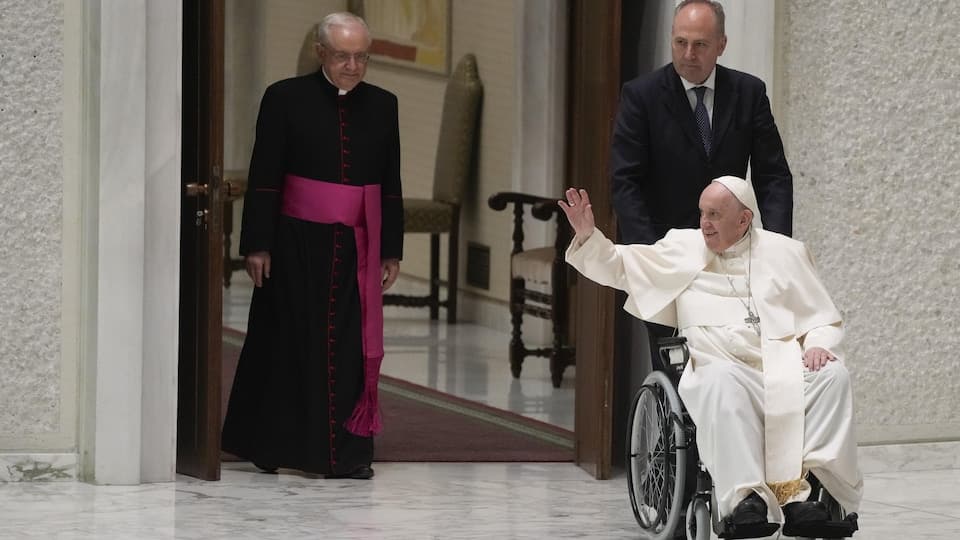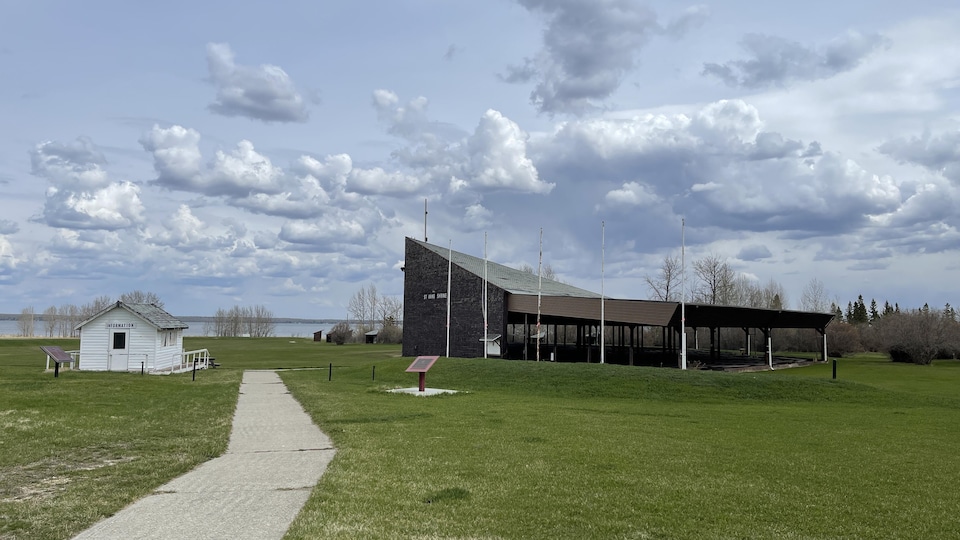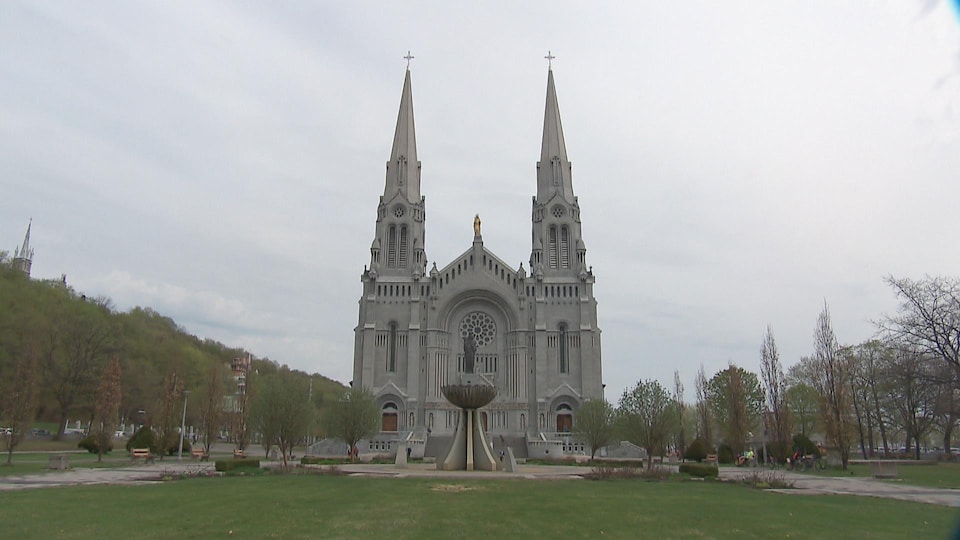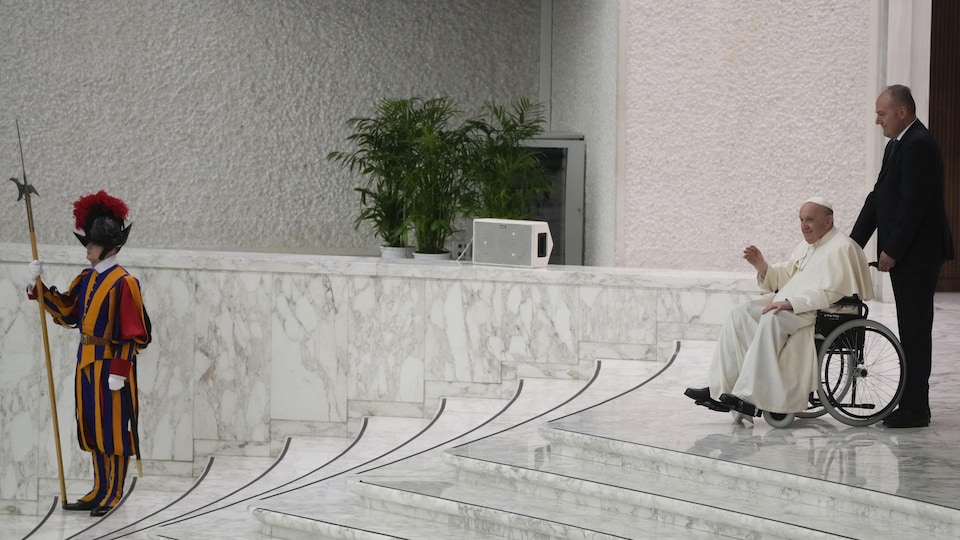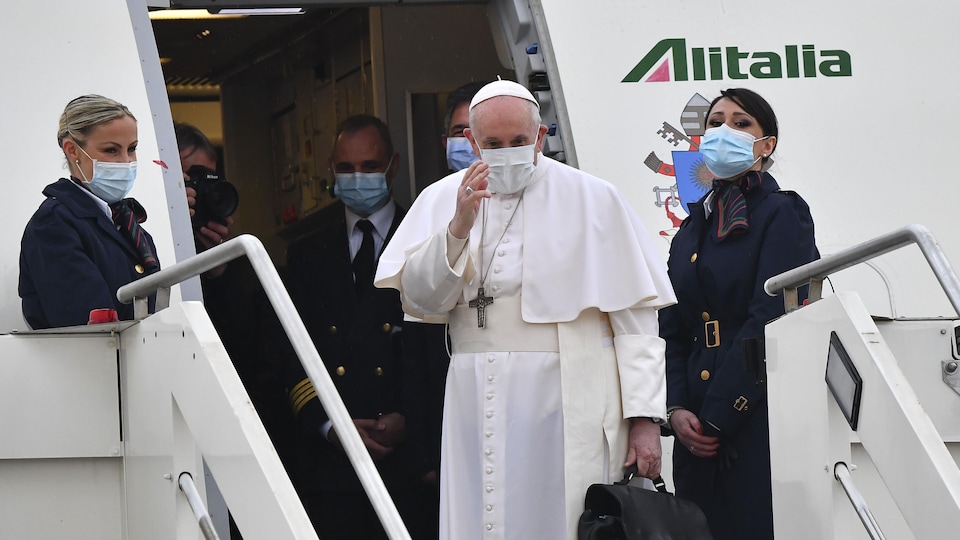The complexity of these logistics, he says, is due, among other things, to the state of health of the 85-year-old pope, who has been moving around in a wheelchair for several weeks.
Logistic restrictions
Given this situation, the Vatican office in charge of papal trips has dictated to the organizers based in Canada a series of logistical restrictions in order to limit the movements of the sovereign pontiff.
For example, the head of the Catholic Church will only be able to preside over one major event per day, unless the second event is short-lived and the pope has time to rest in the meantime
.
The events should be relatively brief, because the Holy Father cannot stay on stage for more than an hour
.
For his travels, the sovereign pontiff cannot take the helicopter, and he can only stay in the car for a limited time, which restricts the distance he can travel and the number of places he can visit
.
Moreover, his state of health does not allow him to sleep each night in a different place.
The travel program
In view of these constraints, and the wishes formulated by the pope himself, the first stage of his trip, on the side of Edmonton, should take place over several days around July 26.
The sovereign pontiff could visit the site of a former boarding school for Aboriginals, as well as Lac Sainte-Anne, a place of pilgrimage for Aboriginals who venerate the grandmother of Jesus.
It is during this first stop, on the lands of the First Nations, that the pope could reiterate his apologies for the involvement of the Church in the residential school system.
The sovereign pontiff would then begin his visit by responding to call to action 58 of the report of the Truth and Reconciliation Commission of Canada, which calls for an apology from the pope on Canadian soil.
The second stage of this trip will take the pope to Quebec, where a ceremony should be held in the Sainte-Anne-de-Beaupré basilica, also a place of pilgrimage for Aboriginal people who have a devotion to Saint Anne.
The third and final leg of the papal trip, to Iqaluit, should be much shorter, lasting only a few hours, before the pope takes the plane back to Rome.
It will be the first time that a pope has visited the Arctic region.
Coordinating work
According to one of the organizers of this visit, the number of teams involved in the preparation of the trip contributes to its complexity.
At the Vatican, the office in charge of organizing the papal trips collaborates with the Canadian team of the papal visit, which itself must work with the various indigenous communities of the country, as well as with the governments of Alberta, Quebec and Nunavut who will welcome the pope.
” The challenge is that all First Nations, Inuit and Métis feel concerned by this trip »
The organization team hopes that as many Aboriginal people as possible can take part in this visit, even if the sovereign pontiff only stops at three places, due to his age and his health problems.
During his trip, the pope will be accompanied by a team of about 70 people, including, in particular, his medical team, Swiss guards and gendarmes from the Vatican, those responsible for logistics, and interpreters.
The Pope’s logistics and security officials in the Vatican, make between two and three reconnaissance trips
before the papal trip, says the president of the International Association of Journalists Accredited to the Vatican, Loup Besmond de Senneville.
The journalist specializing in the Vatican adds that these preparation trips are intended to visit the places, evaluate the distances and the duration of the journeys, plan the modes of transport, and book the hotels, for the entourage of the pope.
Regarding the accommodation of the sovereign pontiff, the place of residence must meet several security criteria and must be approved by the Royal Canadian Mounted Police (RCMP) and the Vatican Gendarmerie. The place must also be sufficiently accessible for the pope in a wheelchair.
Loup Besmond de Senneville, who follows the pope on his papal journeys, also thinks that special devices, such as elevators, could be installed, as was the case during his last trip to Malta last April
.
A tiring trip
This trip is important, and will be quite heavy logistically, human, and in terms of fatigue, warns Mr. de Senneville.
The pope is going to take a long flight, which he hasn’t done for several months, […] there will be domestic flights, time differences, and temperature differences
.
According to the Vaticanist, this visit by the Pope will be special, because it is a journey of asking for forgiveness for a subject that is close to his heart
and at the same time a physically tiring trip
three weeks after a multi-day trip to Africa in early July.
Moreover, upon his arrival at the airport, the head of the Catholic Church should be greeted, as required by protocol, by the Governor General, Mary Simon, who represents the Head of State, Queen Elizabeth II. The fact that she is Indigenous helps a lot, because the Pope will not only meet the Governor General, but an Indigenous person
says an organizer.
More than an apology?
Within the organization of the papal visit, it is expected more than an apology
on the part of the sovereign pontiff, given his encounters with the Aboriginal peoples in the Vatican.
Last March, during his audience with the Métis delegation, the Pope said three words in English, to make himself understood: truth, justice and healing
.
The president of the Métis National Council, Cassidy Caron, said then that she saw it as a personal commitment on the part of the pope, and actions to come.
The Aboriginal people are demanding, among other things, the restitution of objects that belong to them, and which are in the hands of the Church, as well as access to documents relating to residential schools that are archived in Catholic religious communities.
According to an organizer of the trip, the pope normally comes to meet those who have lost faith and hope, to console them, but this time the Holy Father comes to heal wounds opened by Church leaders themselves
.
Reference-ici.radio-canada.ca
